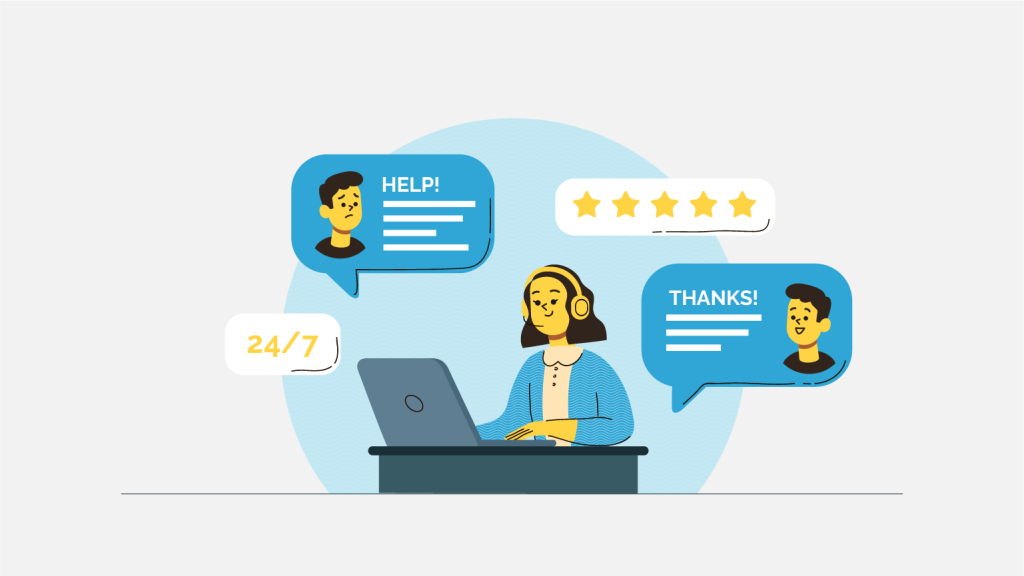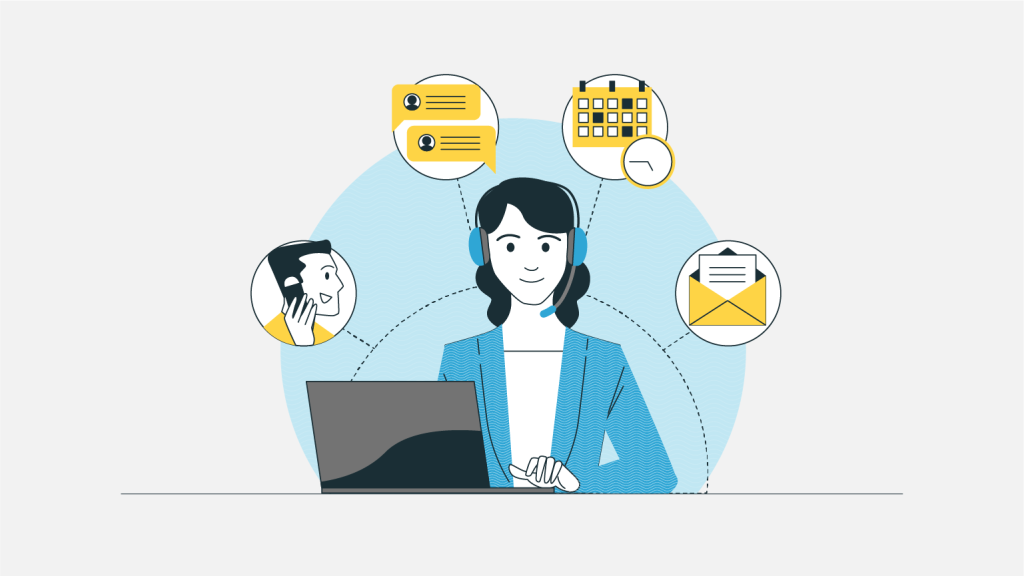Going through a huge pile of survey responses can be taxing and daunting. Leaving you to ponder what works and what doesn’t work for your business. Gathering customer feedback is only one step but making it to good use takes your time and effort.
However, you are not the only one struggling. As I said gathering feedback is only the first step, businesses find themselves at a loss figuring out how to analyse the feedback and implement the actionable steps.
The aftermath, your customer feels you turned a deaf ear to their opinions and they leave when they don’t see any changes.
But you don’t want the same fate for your company. Certainly not! So, how do we decipher all of this customer feedback and translate it into actionable steps?
So, let’s take action! In this blog, we will make use of the feedback and translate it into 7 wonderful strategies that will help you turn feedback to drive customer engagement. Let’s dive in!
1. Establishing a Feedback-friendly Environment

Establishing a feedback-friendly environment means making everyone in the company aware of the significance of actively listening to the customers.
Recognising and valuing customer’s opinion
It is important that each member of the organization at every level understands the value of customer feedback and actively participates in endorsing the customer’s opinion.
Opting for the right tool
Choose the right tool such as HubSpot that makes your analysis seamless and train your employees to use the tools so that they can leverage the customer feedback to drive meaningful insights.
Encouraging everyone involvement
Get everyone involved in the dedicated department to gather customer feedback and provide training to employees based on the feedback.
These steps will help you establish a customer-first environment which will not only help enhance customer satisfaction but also will help in the overall growth of the organization.
2. Collecting Feedback Across Multiple Channels

Your customers are not connecting from one place. They exist across different channels like social media, forums, emails, phone calls, live chats etc. so, it is beneficial to gather data from multiple channels to get a greater picture of what your customers have to say.
Here are some strategies to leverage the feedback to the best use:
Collect insights from all the channels
Don’t limit yourself to only emails and phone calls instead connect with customers across different channels such as social media, website forms, app surveys etc. Each channel will give you different insights.
Keep the same brand tone:
Although you are responding across different channels it is important to keep the messaging and tone of the brand the same. So that the customers acknowledge the one brand identity of the company.
Respond immediately
Make sure to promptly respond across all the channels and ensure all the channels follow the same rule.
Unified feedback collection
Always keep all the feedback centralized in one place.
By following these steps, you are not limited to feedback from one type of customer but to multiple customers across different channels.
3. Comprehensive Feedback Analysis

Gathering the feedback in one place is just one step, the real challenge lies in analysing it all.
Analyse the feedback using tools like HubSpot. Let’s say you receive multiple comments and feedback on your website or about the service you are providing. The analytics tool will go through this vast amount of data and create a response in the form of a pattern that you can recognise and get useful insight from here.
4. Prioritising Customer Complaints and Patterns

It is important to look into customer complaints and address them on a priority basis to enhance customer satisfaction.
Here are some tactics to prioritize customer complaints and patterns
Severity evaluation
Assess the severity of the issue of feedback and complaints to analyse its impact on customers and business.
Classification
Classify complaints into different sections based on severity.
Customer Outcome
Prioritize the complaints of a large section of the customer base.
Repetition Analysis
Analyse the complaints that occur frequently. Prioritize those issues and work on them.
Cross-functional collaboration
To address complaints effectively it is a good idea to collaborate with the other departments to gather diverse ideas.
Swift Response
Respond promptly, especially those complaints which can make a difference to customer satisfaction.
5. Convert feedback into action

Turning feedback into action is important for making doable changes to see what your customers want from you.
Here are some steps to do that:
- Find out which complaints need critical action and can be done in less time, do those tasks first.
- Create a specific plan of action including deadlines for executing feedback-oriented initiatives.
- Involve stakeholders in the implementation process, which is very important to make sure that everybody has a collective viewpoint.
6. Let your customer know that you took action

Your customers must know that you listened to them.
But how to do that?
Here are some ways:
- Make it clear through communication by highlighting the positive outcome of their feedback.
- Make use of social media channels and newsletters to let your audience know of the changes made.
- Reveal how the feedback made changes in your product and services.
7. Access the impact of feedback initiatives

Measuring the impact of feedback is the report card of how these changes have worked for your business.
Follow the below steps to access the impact of feedback initiatives.
- Set up metrics such as customer retention rates, net promoter score, and other KPIs to analyse the impact of feedback.
- Compare with the last data to see if any improvement happened
- Keep improving based on feedback.
Final words
As you learnt in this blog customer feedback is not just about collecting the feedback, you have to take action to leverage this feedback into meaningful outcomes. By doing a comprehensive feedback analysis you can make your customer see the difference. It’s high time you turn these surveys into action to drive customer engagement and bring more success to your company.


